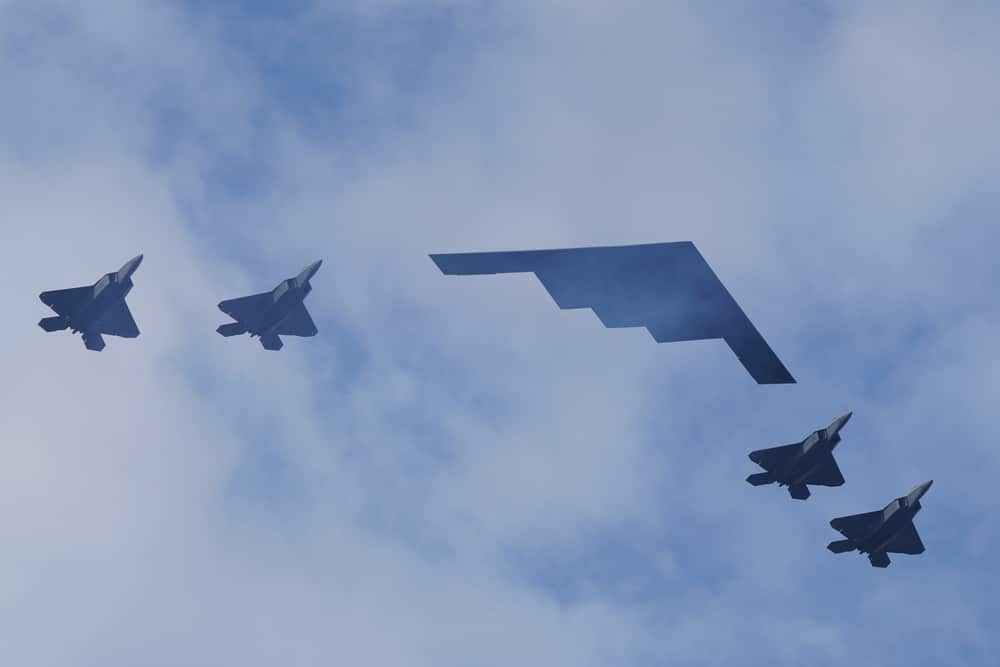In recent days, reports have emerged suggesting that the United States is positioning an extraordinary number of B-2 Spirit stealth bombers in preparation for a possible military strike against Iran.
This development has sparked widespread speculation and concern, with multiple news outlets shedding light on the escalating tensions in the Middle East and the strategic maneuvers underway.
Drawing from various sources, this article explores the details of this military buildup and its implications.
According to posts found on X, corroborated by reporting from independent journalist Ken Klippenstein, the Pentagon is taking significant steps to prepare for a potential conflict with Iran.
Klippenstein noted an “unprecedented number of B-2 bombers amassed” in the region, hinting at a scale of deployment rarely seen in recent years.
The B-2, a long-range stealth bomber capable of delivering both conventional and nuclear payloads, is uniquely suited to penetrate heavily defended targets, such as Iran’s fortified nuclear facilities.
Adding weight to these claims, Axios reported that a U.S. official confirmed a surge of airpower into the Pacific-Indian region, including B-2 bombers stationed at Diego Garcia, a strategic airbase in the Indian Ocean.
The outlet tied this buildup to a supposed two-month deadline set by the Trump administration for Iran to comply with diplomatic demands, after which military action could be considered if negotiations falter. This timeline has fueled speculation that the U.S. is signaling its readiness to act decisively.
The strategic importance of the B-2 in this context cannot be overstated.
Posts on X have highlighted that these bombers are the only aircraft in the U.S. arsenal capable of destroying Iran’s deeply buried nuclear sites, such as those at Natanz and Fordow.
Analysts have long noted that these facilities, protected by layers of earth and concrete, require the precision and power of the B-2’s massive ordnance penetrator bombs to be effectively neutralized.
While major news outlets like Reuters, CNN, and The New York Times have not yet published standalone articles confirming the exact number of bombers or the full scope of the operation as of April 8, 2025, the chatter on X and reports from smaller, agile sources like Axios suggest that the situation is evolving rapidly.
The lack of detailed confirmation from traditional outlets may reflect the sensitivity of the operation or the Pentagon’s desire to maintain ambiguity as a tactical advantage. However, the consistency of reports across platforms points to a credible escalation.
The backdrop to this military posturing is a long-standing feud between the U.S., Israel, and Iran, exacerbated by Iran’s nuclear ambitions and its support for proxy groups in the region.
Posts on X have speculated that Israel, a key U.S. ally, may be coordinating with American forces for a joint operation, though no official statements from either government have confirmed such plans.
The deployment of B-2s to Diego Garcia, within striking distance of Iran, aligns with historical U.S. strategy of projecting power to deter adversaries or prepare for preemptive action.
Critics of the buildup warn of the risks of miscalculation.
An article circulating on X suggested that the Trump administration’s aggressive stance could provoke Iran into accelerating its nuclear program or retaliating through asymmetric warfare, such as cyberattacks or attacks on U.S. assets via proxies.
Meanwhile, supporters argue that a show of force is necessary to bring Iran back to the negotiating table under pressure.
As of now, the Pentagon has not publicly detailed its intentions, and the story remains fluid.
The unprecedented nature of the B-2 deployment, if accurate, marks a significant shift in U.S. military posture toward Iran. Whether this is a prelude to war or a high-stakes diplomatic bluff remains unclear, but the concentration of such advanced weaponry in the region has undoubtedly raised the stakes.









